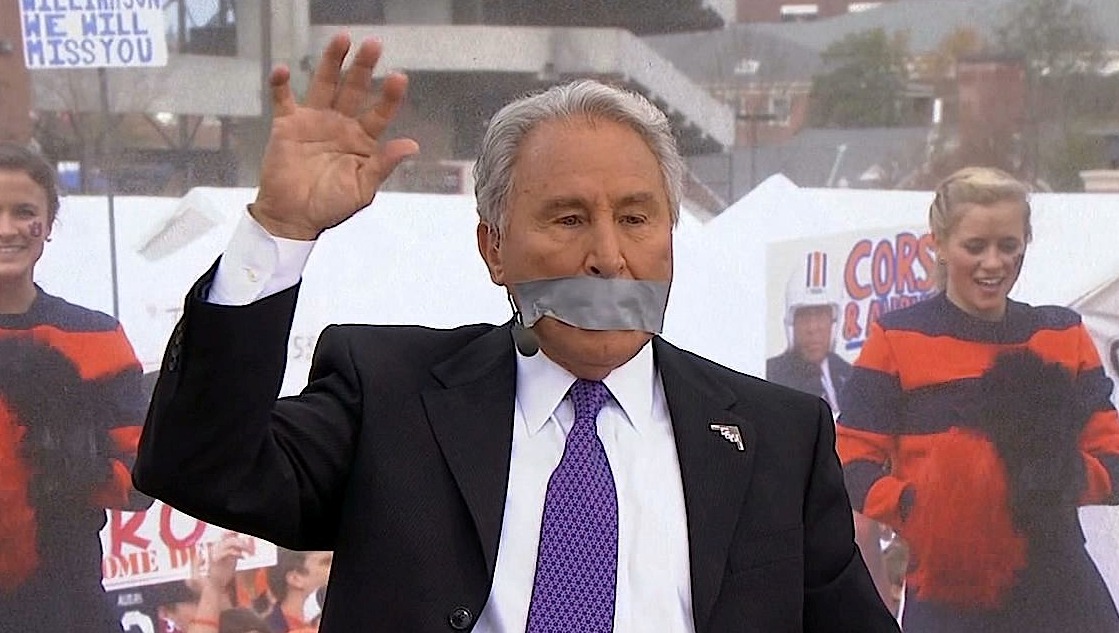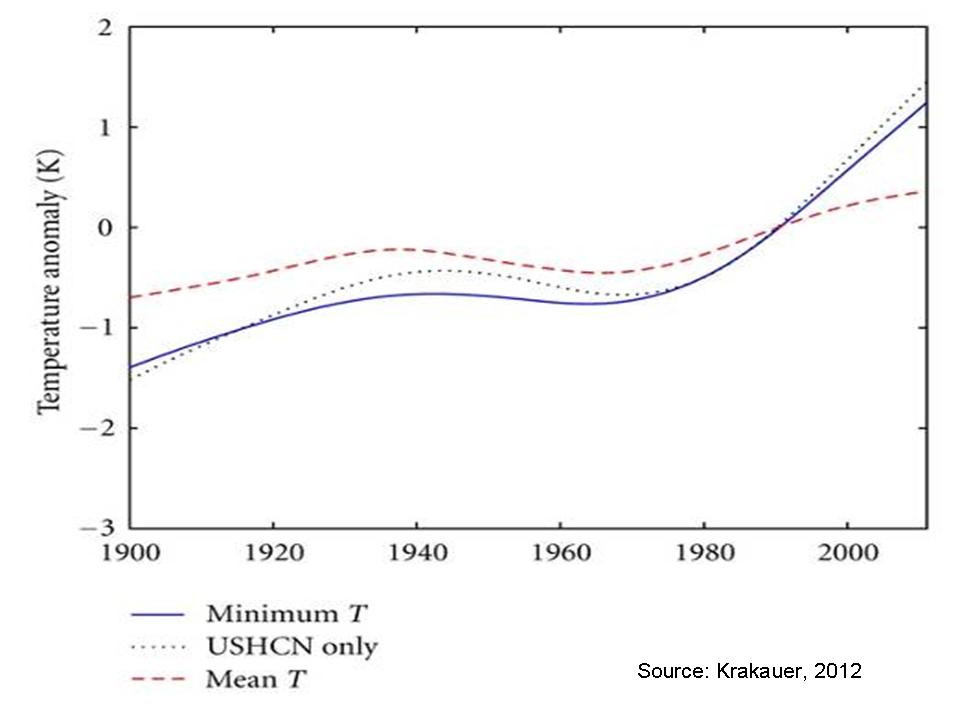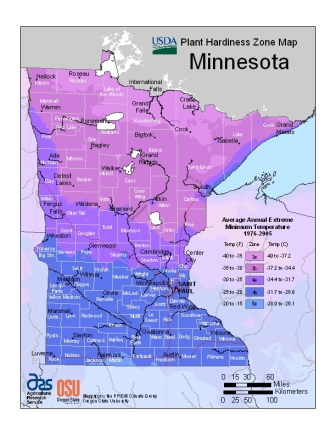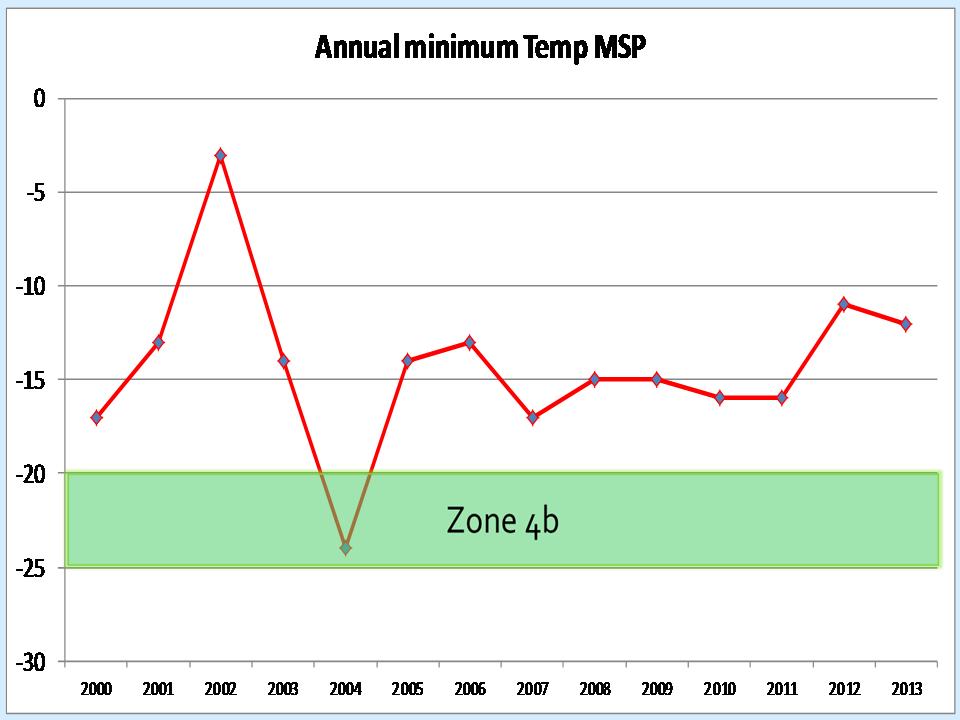Just looked at the forecast for the week – Thursday’s forecast high temperature is 32 deg. F. This is a far cry from last year’s record-shattering 86 on the same date. Clearly all this blabbering about climate change is just a bunch of hysterical nonsense.

As sportscaster Lee Corso would say, “Not so fast, my friend…” While winter 2013 can’t compete with winter 2012 in terms of record-breaking warmth, this winter has continued a trend which may have profound implications for landscape and garden plant selections.
As you’ll recall, last winter saw the release of a new USDA Hardiness zone map which indicated that most areas of the US had warmed by at least one-half hardiness zone (5 deg. F) since the previous map was produced 22 years earlier. Hardiness zones are based on average minimum temperatures; in other words, what’s the coldest temperature you’re likely to see in a given winter. As it turns out, minimum temperatures have been warming faster than overall average temperatures. So much so, in fact, that one researcher declared the brand new hardiness map dead on arrival. Nir Krakauer at City College in New York noted that if we look at trends, rather than averages, many areas of the US are already another half a zone warmer than the new USDA map.

Minimum winter temperatures are warming at a much faster rate that average temperatures
Last week I gave a presentation at the Minnesota Shade Tree Shortcourse and pulled together some cold hardiness data for the Twin cities. According to the new USDA map, Minneapolis-St. Paul is now zone 4b (-25 to -20 deg. F). One way to think of this over a long enough time-span, about 1/3rd of their winters should reach a low in that range, 1/3rd should be slightly warmer, and 1/3rd should be slightly colder.
The new USDA map indicates the Twin cities are in zone 4b
I pulled out the winter weather records for Minneapolis-St. Paul since 2000, including winter 2013. In the past 14 winters temperatures in the Twin cities have dipped to their hardiness zone level exactly once, 2004. All other minimum temps were at least 5 deg. F warmer.

Annual minimum temperatures at Minneapolis-St. Paul airport (MSP) have reached zone 4b levels only once since 2000.
Obviously a 14 year record is not sufficient to build a hardiness map. Nevertheless, if someone tries to use this winter as proof that climate change is hoax; just remember, minimum winter temperatures – the temperatures that serve as a primary limit of which plants can grow where – tell a different story.
You may find this plant “movement” article interesting on that v
ein. Arctic plants changing. http://bigthink.com/ideafeed/more-flowers-in-the-arctic
We’ve been seeing a similar trend here. The first and last frost date are about the same, but winter is just not as cold and when the temperature dips it doesn’t stay as low for long.
Thanks for the link Doug. I think when most people think of climate change they think of summer heat and drought. But the most immediate changes are being felt in winter and in the colder regions.
I’ve been thinking about retiring from the nursery industry, and getting a few acres of Kansas river bottom land, and starting a U-pick pineapple operation. Looks like it could work! I already have the Hawaian shirt!